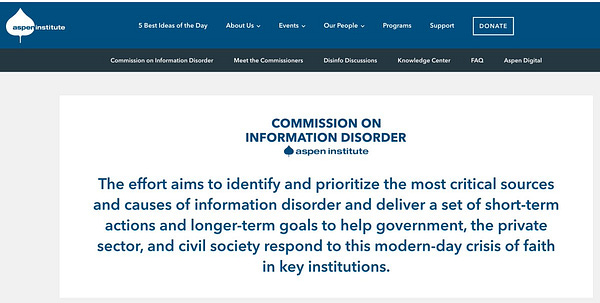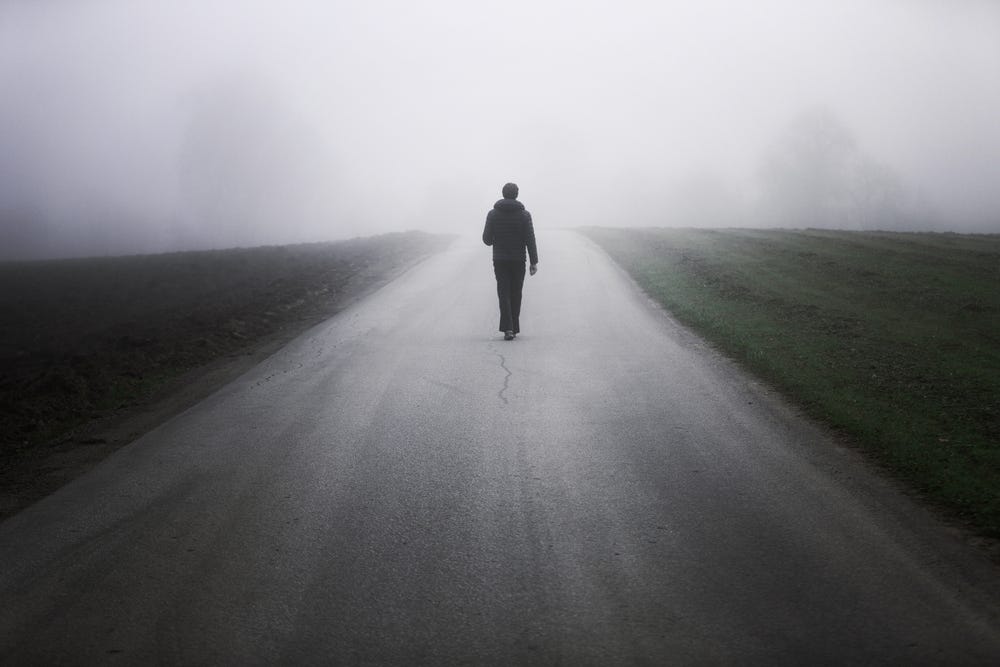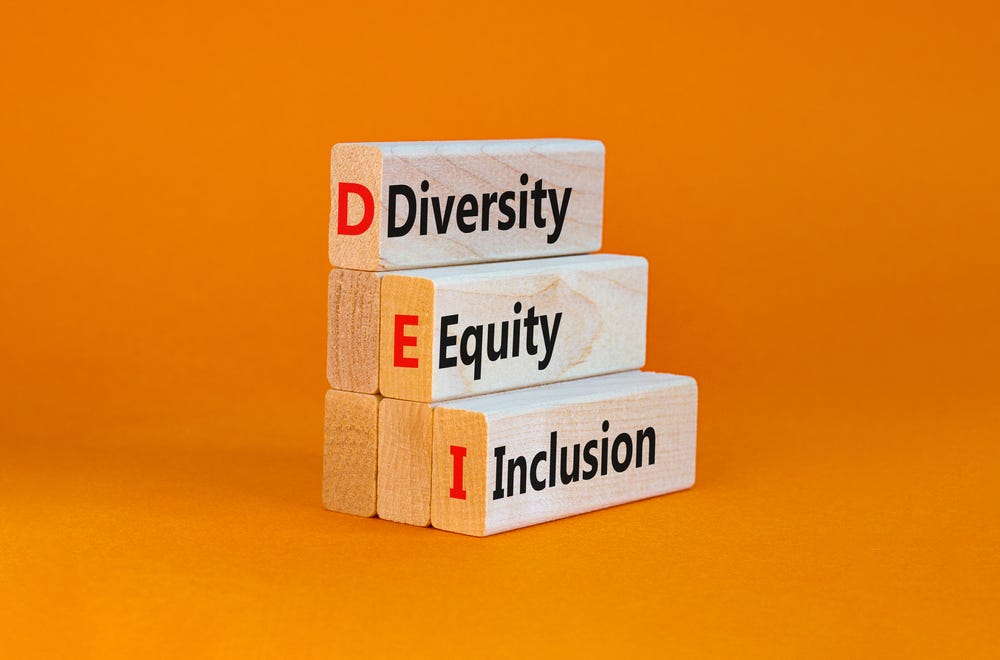E-Pluribus | September 7, 2022
A conservative journey; backdoor Critical Race Theory; and the impact of Diversity, Equity and Inclusion on children.
A round-up of the latest and best writing and musings on the rise of illiberalism in the public discourse:
Glenn Loury: My Path to Conservatism
At his Substack, Glenn Loury published an excerpt from his recent conversation with computer scientist and podcaster Lex Fridman. Loury details his own journey to the conservative side of the spectrum and the realities that he encountered throughout his life and career that kept nudging him in that direction.
Another thing to say about my politics—and you're right, I've moved around—is that, you know, I began [on the] South Side of Chicago, a black kid, I was a liberal Democrat. I encountered the economics curriculum at MIT, and I became trained in economics in the tradition that I've just described. And I encountered also the Reagan revolution. This is the late ‘70s and early ‘80s. These are big debates about economic policy, and so on. And I found a lot to admire in the supply siders. The people were saying, you know, let's get the government out of the way, the people who worried about national debt—which is a lot more now than it was then—the people who worried that the welfare state could be too big, that the incentives of transfer programs could be counterproductive, that you had a war on poverty … and we did have a war on poverty, and poverty won. There's a lot of evidence that the war on poverty was lost by the people who were trying to “eradicate poverty in our time.”
That incentives really do matter, and that the state, which is driven by politics, is often unresponsive to the dictates of incentives. Whereas markets eliminate people who are inefficient and who are not cognizant of the consequences of incentives, because they can't cover their bottom line and they won't persist for very long if they can't cover their bottom line. They're forced to respond to the realities of differences and costs and benefits and so forth in a way that governments can cover because they have their hand in our pocket. They can cover their losses and they can make accounts balanced not withstanding their mistakes because they can take my property by fiat, by the power of the state. The tax collector comes. If I don't pay, he seizes my holdings. And they can carry on in that way.
They need the corrective influence of markets in order to be responsive to the realities of life. I mean, I may not like it that prices are telling me that something that I want to do is infeasible. I may not like it. But what the prices are telling me is that the costs of doing it exceed the benefits to be derived from doing it. And if I persist in doing it not withstanding that, I'm gonna run losses. And those losses will accumulate. And the net effect of that over an entire society is stagnation and ultimate attenuation of the economic benefits that might be available to people. Again, I think if you look at the developing world in the postcolonial period, the second half of the twentieth century, that's exactly what you see. Planning doesn't work. Centralized control over resource allocation doesn't work.
Read the whole thing.
Nicole Ault and Megan Keller: How Teachers Are Secretly Taught Critical Race Theory
Despite repeated denials from advocates that Critical Race Theory is just an academic concept not taught in schools, Nicole Ault and Megan Keller in The Wall Street Journal relate the experiences and discoveries of one Benjamin Auslander, a parent who didn’t take the deniers at their word.
In 2018 the Tredyffrin-Easttown School District near Philadelphia signed a contract with Pacific Educational Group, a California-based consulting firm. According to the school district’s website, the partnership’s purpose was “to enhance the policies and practices around racial equity.” The district assured parents in an online update last summer that no “course, curriculum or program” in the district “teaches Critical Race Theory.”
Benjamin Auslander didn’t buy it. The parent of a high schooler in the district, he wanted to see the materials used to train teachers. Mr. Auslander, 54, made a formal document request but was denied. Officials told him the materials couldn’t be shared because they were protected by Pacific Educational Group’s copyright. His only option was to inspect them in person—no copies or photos allowed. “What are you trying to hide?” he asked school board members at a meeting in December.
[ . . . ]
Documents emailed from 2019 to 2021 by Pacific Educational Group to district administrators in advance of various training seminars cite critical race theory explicitly. A rubric dated Feb. 4, 2020, encourages participants to “Deconstruct the Presence and role of Whiteness” in their lives. A March 17, 2020, presentation lists “aspects and assumptions of white culture” in the U.S. Some are negative, such as “win at all costs,” “wealth = worth,” “don’t show emotion,” and in reference to food, “bland is best.” Others are seemingly universal principles such as “cause-and-effect relationships,” “objective, rational, linear thinking,” and “plan for future.”
That presentation also spells out the “5 tenets of critical race theory” to “better understand the critical intersection of race and schooling.” One tenet is the “permanence of racism,” or the idea that “racism is endemic to all our institutions, systems and structures” in the U.S. Another is “whiteness as property.” The “critique of liberalism” tenet argues that “colorblindness,” “neutrality of the law” and the “myth of meritocracy” must be “deconstructed.”
These tenets aren’t presented as abstract notions for faculty to consider, but ideas they’re meant to apply. School staff’s ability to use “critical race theory . . . to inform racial equity leadership and analysis of school policies, practices and procedures” is considered a sign of the successful “internalization and application” of Pacific Educational Group’s framework.
Read it all.
Free Black Thought Editors: Six Unsettling Features of DEI in K-12
Considered in a vacuum, the concepts of “Diversity, Equity and Inclusion” (DEI) are hard to argue against. But since no one lives in a vacuum, the editors of Free Black Thought are especially concerned about the impacts of DEI on young people. Children who are being educated from their earliest years with an “oppressed vs. oppressor” framing are likely to internalize that dynamic with long-lasting effects on their abilities to function in society and interact and form relationships.
All six of these features of DEI may have unintended negative effects on children. They may mislead students (and educators as well) about basic facts about American society and they may damage children’s psychological health, sense of self, and sense of agency. We regard these six practices as potentially harmful to all students, regardless of race. However, because of the way DEI insists on racializing students and because of the way that it crudely essentializes different racial identities, it poses distinct and different dangers to white students and to students of color. As we explain below, DEI tends to demonize white children even as it promotes in black children feelings of victimhood, disempowerment, and alienation from white peers and teachers and from their country.
[ . . . ]
The “oppressed vs. oppressor” framing has the potential to damage not only black girls but black boys as well. If we send a generalized message to young children to the effect that “Folx who do not benefit from their social identities…have little to no privilege and power,” then we risk destroying black children’s sense of agency and self-determination.
This is what happened to a black boy in Evanston, Illinois, when a “Black Lives Matter at School” curriculum was introduced in his school. His mother, Ndona Muboyayi grew up in Evanston and is a member of the local NAACP. As an adult, she moved to Toronto, married a Congolese man, had children, and moved her family back to Evanston. In her telling, when her children began attending Evanston schools, “within the first year, my children were being taught about white supremacy and white privilege and that all white people were rich and racist.”
The lesson sank in. Her son returned from school and announced that he could not pursue his dreams of becoming a lawyer, because, in his words, “there are these systems put in place that prevent Black people from accomplishing anything” (Figure 6). Whatever inequities do remain in American life, no parent wants their son to learn at school that he cannot pursue his dreams because of his skin color.
Read it all here.
Around Twitter
Did the people of Chile just reject a bunch of “guaranteed” rights? Or maybe it goes a little deeper than that? Here’s Liz Wolfe of Reason:






Excerpts from a lengthy Glenn Greenwald thread on the new self-appointed “disinformation” arbiters:












And finally, be careful what you tweet:








